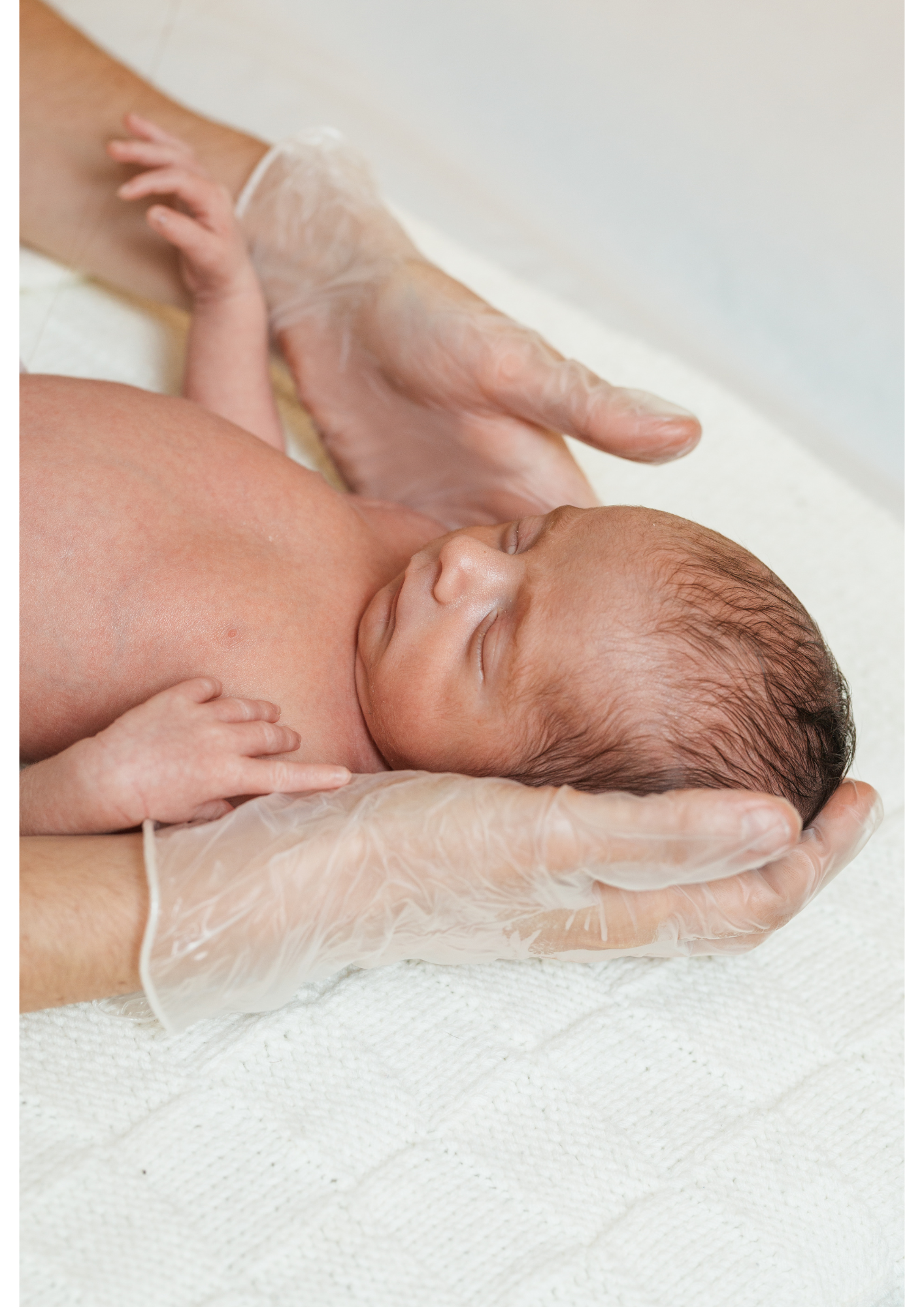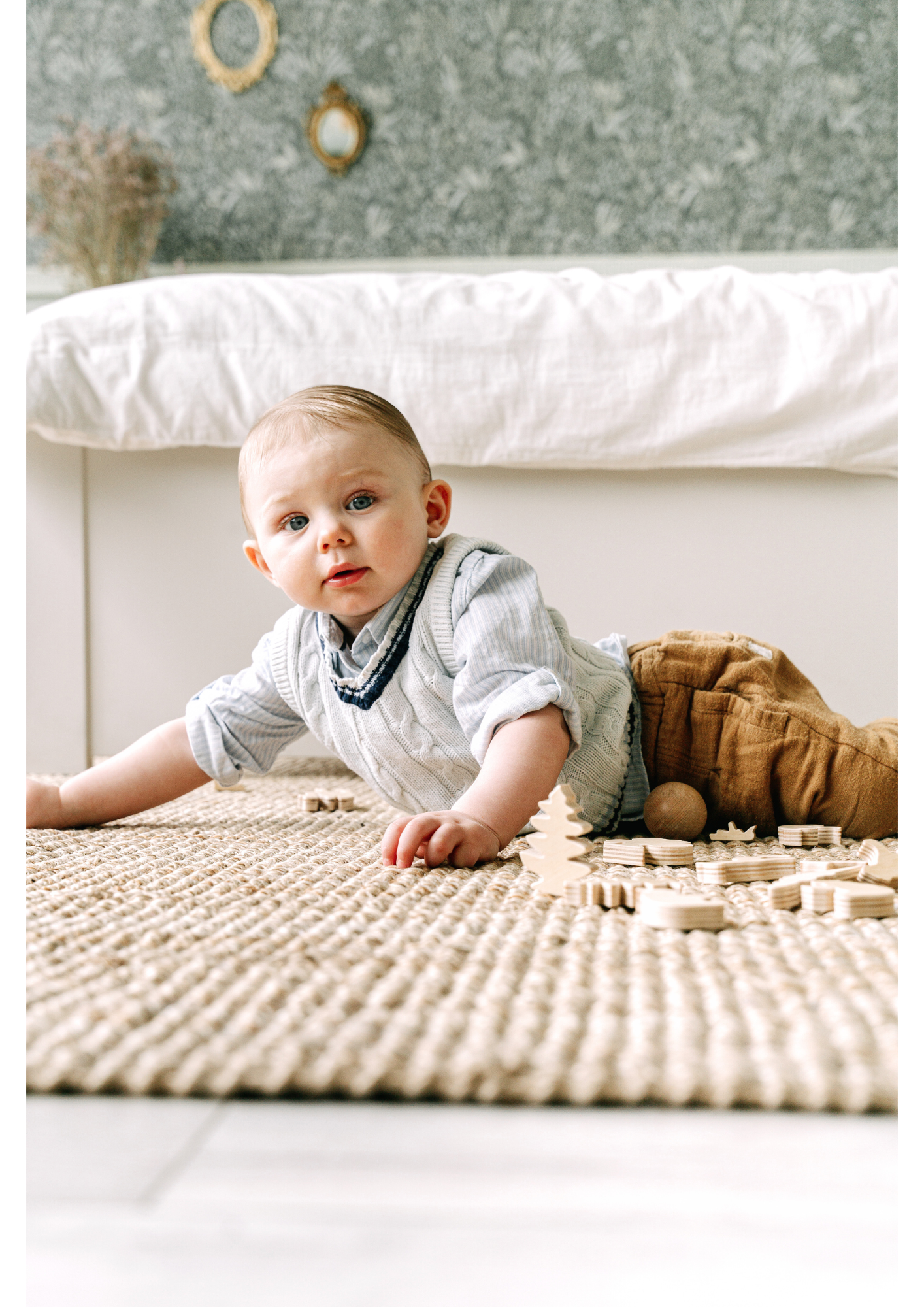
Problématiques respiratoires et oro-faciales
S’il y a bien une chose que les parents se rendent compte pendant les premières années de vie de leur enfant, c’est que les enfants sont plus souvent malades que les adultes. Les problèmes respiratoires chez les enfants sont fréquents en raison de l’immaturité de leur système respiratoire, ce qui les rend plus sensibles aux infections.
La physiothérapie joue un rôle crucial dans la prévention et le traitement de ces affections en améliorant la mécanique respiratoire. Une respiration nasale est essentielle, car elle aide à filtrer et humidifier l’air, réduisant ainsi le risque d’infections. Des conditions comme la rhinite et l’otite moyenne peuvent résulter d’inflammations et d’accumulations de liquide, respectivement, et la physiothérapie peut aider à soulager ces problèmes. De plus, encourager une respiration abdominale et éviter des dispositifs restrictifs favorisent le développement moteur de l’enfant. Enfin, il est conseillé de limiter l’exposition à des irritants et de favoriser les activités extérieures pour améliorer la santé respiratoire globale de l’enfant.
La respiration nasale est essentielle chez le nourrisson et chez l’enfant
Le nez est fait pour respirer, beaucoup plus que la bouche! Le nez a un système sophistiqué de défense qui permet de limiter les infections respiratoires et de permettre une respiration efficace. Favoriser la respiration nasale à la respiration buccale est essentielle pour plusieurs raisons: le nez possède une muqueuse produisant du mucus permettant d’emprisonner les pathogènes. Il possède également un système de cils poussant et drainant le mucus vers la gorge. L’air passant par le nez sera humidifié et réchauffé par le nez ce qui limitera la prolifération des pathogènes.
Un enfant qui respire par la bouche à plus de chance d’être malade! Si vous remarquez que votre enfant ou bébé a souvent la bouche ouverte (ou dort seulement la bouche ouverte), il serait bien de consulter en physiothérapie pour découvrir la cause et rapidement retrouver une respiration nasale. Les professionnels de la physiothérapie en pédiatrie chez Cigonia peuvent évaluer et traiter le crâne et le visage des nourrissons, des enfants mais également jusqu’à l’adolescence (avant l’âge de 14 ans) grâce à divers exercices mais aussi par la thérapie manuelle intégrative.
La respiration abdominale favorable au bon développement moteur
Contrairement à l’adulte, le patron respiratoire normale chez l’enfant est la respiration abdominale. Ceci permet que seulement le diaphragme (muscle principal de la respiration situé sous les côtes) se contracte et se relâche lors d’une respiration courante. Une respiration dites « supérieure », c’est-à-dire avec un mouvement des côtes est beaucoup plus coûteuse en énergie chez l’enfant ce qui peut nuire à son développement.
Par ailleurs, le diaphragme rempli plusieurs rôles et est le muscle principal de la stabilité du corps de l’enfant. Le diaphragme lui permet de tenir la position sur le ventre pour lever les bras ou se pousser à quatre-pattes. Un enfant qui déploie trop d’effort à respirer aura de la difficulté à évoluer dans la position ventrale peu importe le nombre de temps qu’il passera dans cette position. Vous aurez donc deviné qu’un bon patron de respiration peut avoir son incidence sur le reste des acquisitions du développement moteur de l’enfant.

Quoi faire pour améliorer la fonction respiratoire de votre enfant
- Dès son plus jeune âge, mettez votre enfant sur le ventre lorsqu’il est surveillé et réveillé. Cela permettra de renforcer son diaphragme tout en stimulant son développement moteur.
- Limitez l’utilisation des dispositifs pour bébé comme le siège d’auto (lorsque vous n’êtes pas en voiture) ou les balançoires puisqu’ils limitent l’expansion de la cage thoracique du bébé donc sa respiration.
- Enrayez le plus possible l’utilisation de parfum, les produits de tabac ou de produits ménagers forts dans la maison pour éviter d’irriter les muqueuses respiratoires de votre enfant.
- Favoriser une respiration par le nez chez votre enfant le plus possible en utilisant le lavage nasal pour faciliter l’expulsion des sécrétions lorsque cela est nécessaire. Attention : si la respiration nasale de votre enfant ne s’améliore pas après le lavage nasal, ce n’est pas ce qu’il a besoin.
L’otite moyenne chez l’enfant
Selon les études, l’otite est le deuxième diagnostic le plus fréquemment rencontré dans les salles d’urgences. Les enfants entre l’âge de 6-24 mois sont les plus touchés. Cette prévalence est attribuable au fait qu’à cet âge leur trompe d’Eustache (petit canal permettant d’évacuer vers la gorge le surplus de liquide derrière le tympan) est plus horizontale et plus petit que chez l’adulte ce qui la rend plus susceptible à être collapsée (comprimé et/ou obstrué). Le liquide s’accumule derrière le tympan ce qui conduit à l’infection.
La physiothérapie ne remplace pas les antibiotiques chez l’enfant mais permet d’améliorer la mécanique de la trompe d’Eustache en diminuant la pression de certains os du crâne et du visage qui peuvent venir la collapser. Il est aussi possible d’améliorer la fonction du nez pour éviter que les sécrétions nasales remontent vers les oreilles.
La rhinite chez l’enfant
La rhinite est une condition qui produit une congestion du nez soit à cause d’une inflammation de la muqueuse nasale ou un surplus de production de mucus. Elle peut être secondaire à des allergies, une infection ou même être d’origine mécanique.
Le rôle de la physiothérapie est de diminuer la tension mécanique sur la muqueuse nasale afin de réduire son inflammation, favoriser une respiration nasale en favorisant l’expansion normale du nez avec la croissance et améliorer la fonction du nez (sentir et pousser les sécrétions vers la gorge).

L’asthme et la mécanique respiratoire
L’asthme est une des maladies chroniques les plus fréquentes chez l’enfant. Selon les études, ce sont 14% des enfants dans le monde qui sont atteints de l’asthme et ce chiffre serait en augmentation surtout dans les pays industrialisés. L’asthme est défini comme une maladie inflammatoire chronique des voies respiratoires qui augmentent leur hyperactivité ce qui rend plus difficile l’entrée et la sortie de l’air dans les poumons.
La physiothérapie améliore la mobilité des muscles respiratoires et des côtes ainsi que l’expansion du visage afin de faciliter l’entrée de l’air dans les poumons. Il est possible également d’améliorer la sortie de l’air pour permettre aux sécrétions de sortir plus efficacement des poumons.